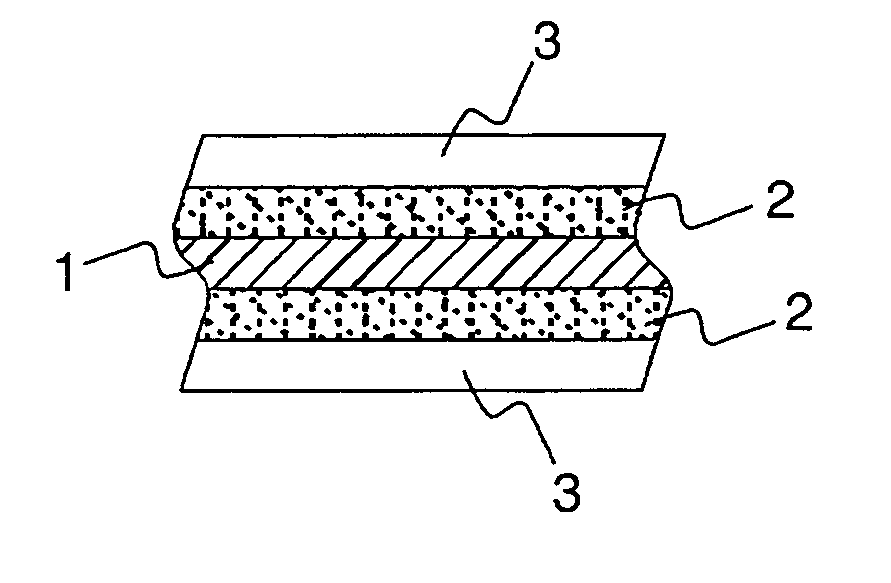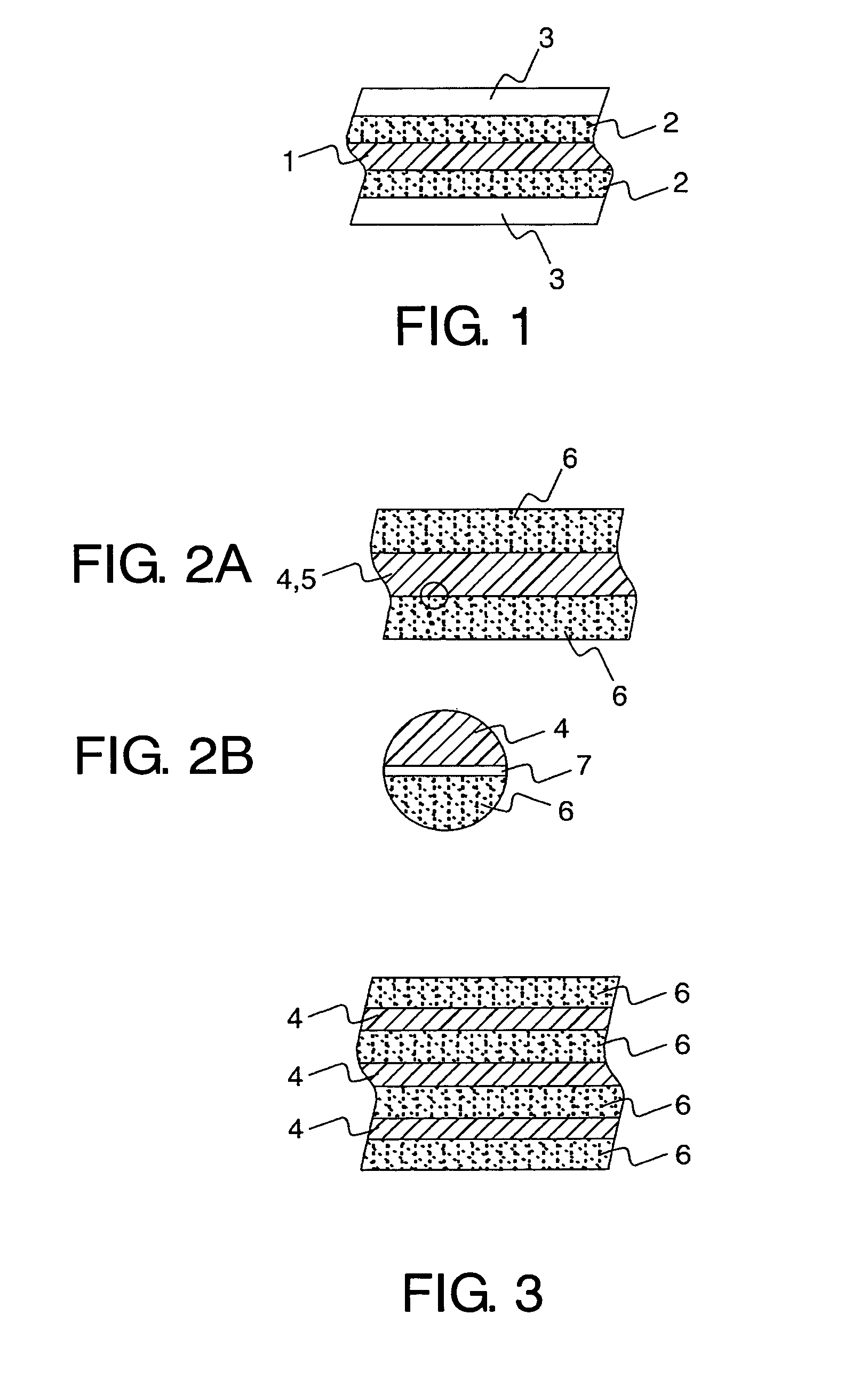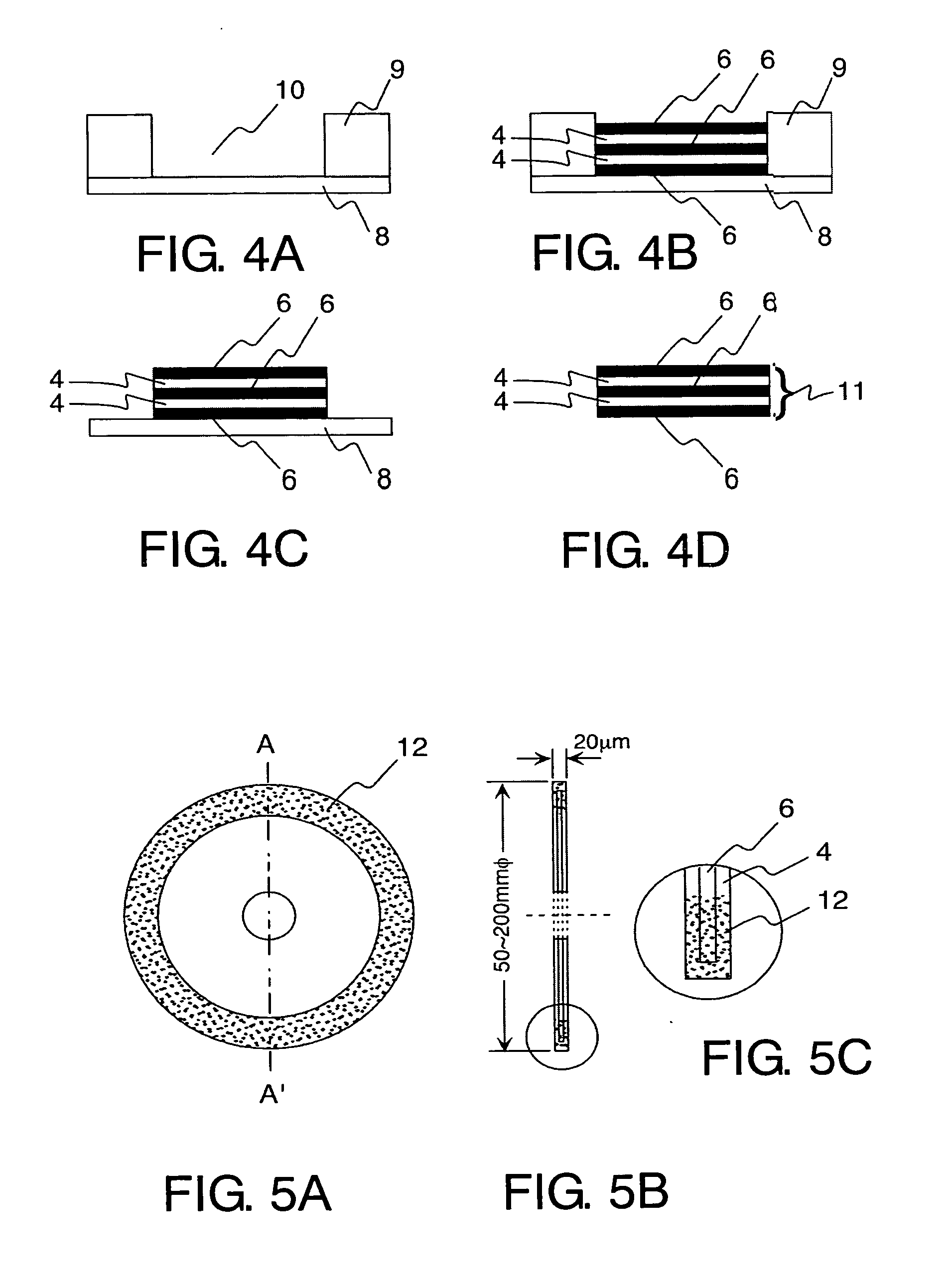Laminated metal thin plate formed by electrodeposition and method of producing the same
a technology of metal thin plate and electrodeposition, which is applied in the direction of manufacturing tools, grinding devices, other domestic objects, etc., can solve the problems of affecting the life of nickel, affecting the mechanical performance of nickel, and reducing the service life of nickel, so as to achieve excellent mechanical characteristics and/or chemical resistance, excellent electrical characteristics
- Summary
- Abstract
- Description
- Claims
- Application Information
AI Technical Summary
Benefits of technology
Problems solved by technology
Method used
Image
Examples
first embodiment
[0022] First Embodiment
[0023] Referring to FIG. 1, a laminated metal thin plate according to a first embodiment of this invention comprises a plurality of metal layers provided by at least two kinds of materials different in composition from each other and integrally adhered to each other in such a way that the metal layers are symmetrically arranged in a thickness direction with respect to the center of thickness. Specifically, a first metal layer 1 is located at the center and is sandwiched between second metal layers 2. On the second metal layers 2, third metal layers 3 are laminated. Thus, the laminated metal thin plate has a symmetrical structure. As these metal layers 1, 2 and 3, suitable materials are selected so that these layers can be adhered at their interfaces with a sufficiently high adhesive strength. If necessary, another metal layer different in composition from the third metal layer 3 may be adhered to an outer surface of each of the third metal layers 3.
[0024] Whe...
second embodiment
[0026] Second Embodiment
[0027] Referring to FIG. 2A, a laminated metal thin plate according to a second embodiment of this invention is composed of a plurality of metal layers including different kinds of materials different in composition from each other. Specifically, when a nickel (Ni) layer 4 or a copper (Cu) layer 5 is located at the center and is sandwiched between nickel-tungsten (Ni—W) alloy layers 6, the laminated metal thin plate is easy in production and has desired characteristics. The thickness of each of these layers may be 0.1 to 50 μm.
[0028] The Ni—W alloy layer 6 formed on opposite sides of the Ni layer 4 (or the copper layer 5) as a core material are equal in thickness to each other to be symmetrical in the thickness direction. With this structure, it is possible to prevent the laminated metal thin plate from being deformed and distorted by a residual stress.
[0029] On the Ni—W alloy layer 6, a tungsten oxide film is formed, thereby providing a high acid resistanc...
third embodiment
[0032] Third Embodiment
[0033] Referring to FIG. 3, a laminated metal thin plate according to a third embodiment of this invention comprises a plurality of Ni layers 4 or other metal layers and a plurality of Ni—W alloy layers 6 alternately laminated with Cu thin films 7 interposed therebetween. Alternatively, a plurality of Ni—W alloy layers 6 and a plurality of Cu layers 5 excellent in electrical conductivity are alternately laminated. The thickness of each layer is appropriately adjusted. Thus, mechanical, electrical, and temperature characteristics of the laminated metal thin plate are adjusted and deformation of the laminated metal thin plate due to the residual stress is easily suppressed.
PUM
| Property | Measurement | Unit |
|---|---|---|
| thickness | aaaaa | aaaaa |
| thickness | aaaaa | aaaaa |
| thickness | aaaaa | aaaaa |
Abstract
Description
Claims
Application Information
 Login to View More
Login to View More - R&D
- Intellectual Property
- Life Sciences
- Materials
- Tech Scout
- Unparalleled Data Quality
- Higher Quality Content
- 60% Fewer Hallucinations
Browse by: Latest US Patents, China's latest patents, Technical Efficacy Thesaurus, Application Domain, Technology Topic, Popular Technical Reports.
© 2025 PatSnap. All rights reserved.Legal|Privacy policy|Modern Slavery Act Transparency Statement|Sitemap|About US| Contact US: help@patsnap.com



